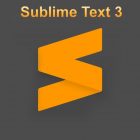

When determining a sufficient value, consider the input data size, the type of GeoAnalytics task, and the number of nodes in your site. When configuring ArcGIS GeoAnalytics Server, ensure that the drive hosting the user profile has sufficient temporary space available, or modify the GeoAnalytics Server temporary file location after installation. To meet performance and scalability expectations.ĪrcGIS GeoAnalytics Server requires a minimum of 16 GB of RAM per machine. These requirements must be considered in determining hardware needs Listed because the user and business needs of the software may vary. The minimum RAM requirement for ArcGIS GIS Server, ArcGIS GeoEvent Server, ArcGIS Image Server, or ArcGIS Knowledge Server is 8 GB per machine.įor a production environment, hardware requirements are not Installing on a domain controller may adversely affect functionality. You cannot install on domain controllers.For this reason, the installation will not proceed on servers that have an underscore in the host name. Although Microsoft Windows allows you to use the underscore in a machine name, it can still cause problems when you interact with other servers and platforms. Several widely used internet host name specifications have designated the underscore character as nonstandard. Machines with an underscore (_) in their names are not supported.They are not recommended for deployment in a production Supported for basic testing and application development use only. The Desktop Experience option is required on all versions of Windows Server.The operating system version and updates must also be supported by the operating system provider.

Prior and future updates or service packs for these operating system versions are supported unless otherwise stated.The CHC hypothesis makes a set of novel testable predictions to guide future work on the relationship between language and music. We provide evidence for our hypothesis by reviewing neuroimaging as well as neuropsychological studies on linguistic and musical syntax. While linguistic syntax preferably engages the abstract rule-based control circuit, musical syntax rather employs the coordination of the abstract rule-based and the more concrete motor-based control circuits. We put forward the Coordinated Hierarchical Control (CHC) hypothesis: linguistic and musical syntax rely on hierarchical control, but engage this shared mechanism differently depending on the current control demand. In this paper, we tackle these two questions by focusing on hierarchical control as a neurocognitive mechanism underlying syntax in language and music. Although comparative research has made substantial progress in clarifying the relationship between language and music as neurocognitive systems from both a theoretical and empirical perspective, there is still no consensus about which mechanisms, if any, are shared and how they bring about different neurocognitive systems.


 0 kommentar(er)
0 kommentar(er)
